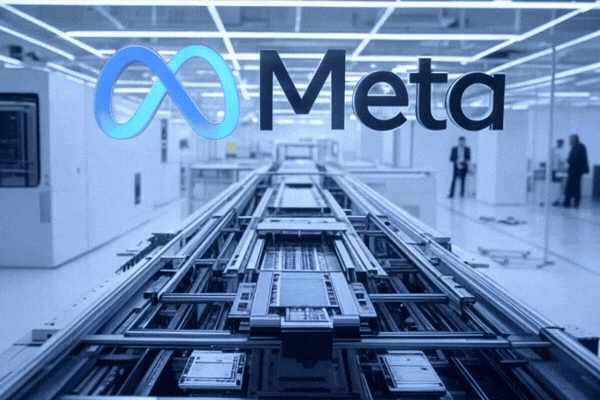3 Cybersecurity M&A Trends Reshaping Enterprise Security in 2025
Late 2025 cybersecurity M&A analysis reveals three critical trends: AI-powered platform consolidation (CrowdStrike's $290M Onum acquisition), cloud-native infrastructure transformation (F5's MantisNet deal), and global services expansion (Accenture's $1B+ CyberCX purchase). With 114 deals in Q2 2025 alone, these consolidation patterns signal a fundamental shift toward autonomous security operations.
Beyond the Algorithm: Why Cultural Fit Still Determines M&A Success in the Age of AI
AI M&A tools like McKinsey's DealScan.AI and Grata are revolutionizing deal sourcing, but 70% of mergers still fail due to cultural incompatibility. Discover why human factors matter more than algorithms in determining long-term M&A success and how to balance AI efficiency with cultural due diligence.
Apple's $364 Billion AI M&A Dilemma: Strategic Overpayment or Strategic Necessity?
Apple faces its biggest M&A decision ever: acquire Mistral AI ($10B) or Perplexity ($18B) while rivals spend $364B on AI infrastructure? Our analysis reveals why Apple's traditional small-deal strategy may not survive the AI revolution. Discover the strategic implications and our recommendation for navigating this $750B market transformation.
The Hidden Cost of Sports Tech M&A: How Accelerating Acquisitions Are Creating a Player Privacy Crisis
The $71 million in sports tech M&A deals between Hudl and SportContract, plus Catapult and Perch, expose a critical gap: accelerating acquisitions are transferring millions of sensitive athlete data points without adequate privacy protections. With 25 million training repetitions and 135,000 player profiles changing hands, sports technology consolidation is outpacing GDPR compliance and athlete data rights. Our analysis reveals how rapid M&A in the $48.6 billion sports tech market creates privacy risks worth up to €20 million in potential penalties. Discover why privacy compliance is becoming the hidden deal-breaker in sports technology acquisitions and what it means for athlete data protection.
Palo Alto Networks' $25B CyberArk Acquisition: Is Agentic AI Worth the Strategic Overpayment Risk?
Palo Alto Networks' $25B CyberArk acquisition targets agentic AI security—but is the 26% premium strategic vision or overpayment? Our M&A analysis reveals why this deal could define the future of AI cybersecurity.
Is AI Video Generation the Next Game-Changer in Sports Technology? Strategic Recommendations for Industry Leaders
The $90.51 billion sports technology revolution is here. xAI's strategic acquisition of Hotshot signals that AI video generation isn't just the future—it's the competitive advantage separating industry leaders from laggards. Discover the strategic recommendations that could define your organization's next decade.
Grammarly's $35M AI Bet: Why the Superhuman Acquisition Tests the Integration Imperative
Grammarly's acquisition of AI email client Superhuman for an estimated $35M reveals the make-or-break dynamics of AI M&A in 2025. With 94% of Superhuman users embracing AI features and potential for $150-300M in cross-sell revenue, the deal represents either a strategic masterstroke or a premium-priced integration nightmare.
The critical challenge? Platform dependency. Both companies rely on Google and Microsoft APIs, creating existential risk if tech giants restrict access or launch competing features. Meanwhile, Superhuman's cult-like user base pays $30-40/month for speed and exclusivity—any integration missteps could trigger massive churn.
Our comprehensive analysis examines why this acquisition tests the "integration imperative" facing all AI companies: Can you build comprehensive platforms without destroying what makes premium products valuable? With Grammarly's $1B war chest and 40M users, the stakes extend beyond this single deal to the future of AI productivity tools.
Key insights: Bull case scenarios, platform disruption risks, integration success metrics, and lessons for AI M&A strategy.
Why $50 Billion in Healthcare M&A Failed: Lessons from Walmart, Amazon, and Best Buy
America's largest retailers just lost $50 billion in healthcare M&A disasters—and the lessons are shocking. When Walmart shuttered all 51 health clinics in April 2024 after investing $2+ billion, it joined Amazon, Best Buy, and others in a spectacular retreat from healthcare. Amazon Care burned through $1.5 billion before shutting down in 2022, while Best Buy took $109 million in restructuring charges in Q1 2025. With a 71% failure rate across major healthcare initiatives, these failures reveal fundamental misunderstandings about healthcare economics, regulatory complexity, and competitive dynamics. This comprehensive analysis examines why retail giants failed where others succeeded, uncovering the critical strategic errors that turned healthcare "disruption" into billion-dollar write-offs. Learn the four fatal assumptions that doomed these ventures, discover what actually works in healthcare M&A (hint: CVS and UnitedHealth got it right), and access our proven 24-month implementation framework for successful healthcare acquisitions. From regulatory compliance pitfalls to physician retention strategies, this deep-dive provides the strategic insights you need to avoid repeating these expensive mistakes while identifying the healthcare M&A opportunities that create real value.
The AI Due Diligence Playbook: What Traditional M&A Misses in AI Acquisitions
When AI companies lost $190 billion in market cap following disappointing quarterly results, it exposed a fundamental flaw: traditional M&A due diligence is failing in the AI era. While Salesforce's strategic acquisition of Convergence.ai created a world-class AI lab with 100% talent retention, McDonald's partnership with IBM became a viral disaster that ended in termination. With AI companies commanding 25.8x revenue multiples and 71% of CEOs struggling with valuation mismatches, the stakes have never been higher. This comprehensive playbook reveals the critical gaps in traditional due diligence—from data quality blind spots to talent retention failures—and provides a proven framework for evaluating AI acquisitions. Learn why health tech AI companies command 28.5x multiples, how to assess algorithmic bias and data lineage, and why integration timelines stretch 12-18 months. As 7 of the 15 largest US deals in 2025 are AI-focused, mastering AI due diligence isn't optional—it's the difference between capturing transformative value and joining the $190 billion destruction club.
Strategic Overpayment in AI M&A: Meta's $14.8B Scale AI Bet and the Long-Term Vision Test
Meta's $14.8 billion Scale AI acquisition has reignited the debate about strategic overpayment in M&A deals. With AI companies commanding average revenue multiples of 25.8x, the question isn't whether strategic buyers are paying premium prices—it's whether visionary leaders can afford not to make bold bets when technological disruption moves at unprecedented speed. Drawing parallels to Meta's historically successful "overpayments" for Instagram and WhatsApp, this analysis explores when strategic overpayment creates long-term value and reveals the innovation strategies driving AI M&A in 2025.
Data Giants Double Down: How Snowflake and IBM's Latest Acquisitions Prove the AI Data Thesis
Two major AI acquisitions this week prove data infrastructure beats algorithms: Snowflake buys Crunchy Data for $250M PostgreSQL capabilities while IBM acquires Seek AI for natural language enterprise data access, validating strategic AI acquisition trends.
The AI Acquisition Imperative: Data, Strategy, and Sector Focus in 2025
The AI acquisition arms race is here. Companies that fail to strategically acquire AI capabilities or the data that fuels them risk being left behind permanently. Cybersecurity and healthcare lead—but every sector must act now.
Strategic M&A in Sports Technology: Maximizing Enterprise Value Through Smart Acquisition
Discover the $86 billion sports technology M&A revolution reshaping the industry. Our comprehensive analysis reveals how strategic acquisitions are driving 15-50% enterprise value increases across sports tech companies. We break down the most valuable acquisition strategies:
✅ Horizontal integration creating 15-25% value increases
✅ Data asset acquisitions commanding 30-50% premiums
✅ Vertical integration driving 20-35% growth
✅ Outside-the-box opportunities in AI, esports, and Web3
Read the full strategic guide →
The Missing Pieces in AI for Healthcare
AI is reshaping healthcare, but are we addressing its most critical challenges? While AI-driven automation is gaining momentum, essential factors like data bias, interoperability, explainability, ethics, and human-AI collaboration often take a backseat.
For AI to truly enhance patient outcomes and clinical workflows, we must tackle these gaps head-on—ensuring trust, transparency, and seamless integration into healthcare systems.
Focusing AI Leads to More Evidence-Based Care Decisions
Discover how training AI exclusively on peer-reviewed medical journals enhances evidence-based decision-making in healthcare. Learn how OpenEvidence’s targeted LLM approach is reducing AI errors and improving clinical outcomes.
Breaking Down Barriers: Why Healthcare Must Embrace Innovation Now
Healthcare lags a decade behind in adopting technology, with resistance to change slowing progress. Regulatory hurdles, risk aversion, and siloed systems prevent groundbreaking innovations from taking hold. This blog explores why healthcare must embrace AI, interoperability, automation, and telemedicine while outlining key strategies for overcoming adoption barriers. Breaking down silos and leveraging real-world data is crucial for a more efficient, patient-centered healthcare system. Read on to discover how we can drive meaningful change in digital health.
Unlocking Startup Potential: 3 Takeaways on the Power of Strategic Partnerships
The Catalyst for Startup Growth
















